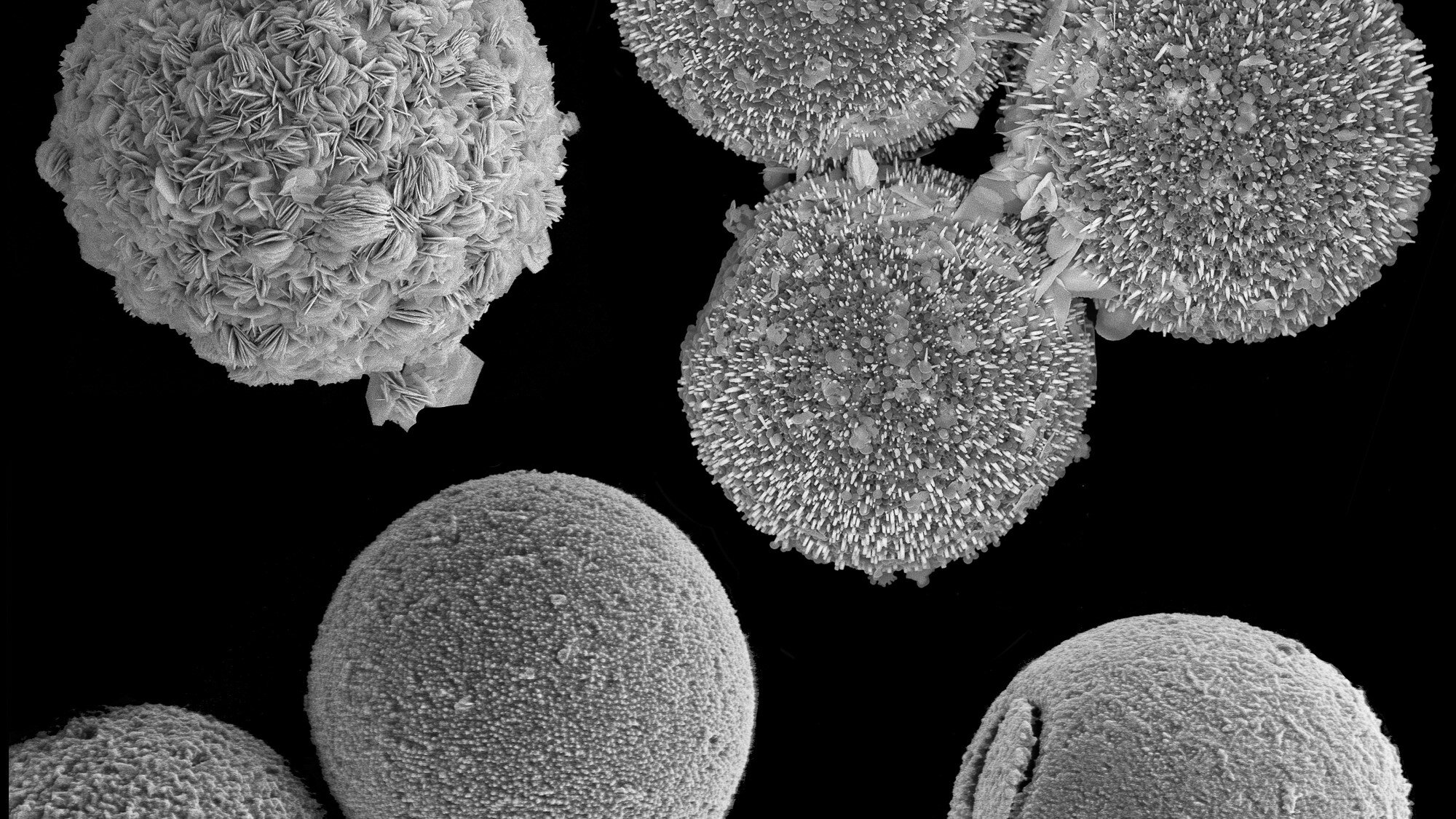Scientists transform algae into unique functional perovskites with tunable properties
Date: 15.3.2023
Scientists have transformed single-cell algae into functional perovskite materials. The team, led by scientists at the B CUBE–Center for Molecular Bioengineering at TU Dresden, converted mineral shells of algae into lead halide perovskites with tunable physical properties.
 The new perovskites have unique nano-architectures unachievable by conventional synthetic production. The method can be applied to the mass production of perovskites with tunable structural and electro-optical properties from single-celled organisms.
The new perovskites have unique nano-architectures unachievable by conventional synthetic production. The method can be applied to the mass production of perovskites with tunable structural and electro-optical properties from single-celled organisms.
"Unicellular organisms have responded over hundreds of millions of years to a wide range of environmental factors such as temperature, pH, and mechanical stress. As a result, some of them evolved to produce absolutely unique biomaterials that are exclusive to nature," says Dr. Igor Zlotnikov, research group leader at the B CUBE–Center for Molecular Bioengineering who led the study. "Minerals formed by living organisms often exhibit structural and crystallographic characteristics that are far beyond the production capacities offered by current synthetic methods."
The team focused on L. granifera, a type of algae that uses calcite to form shells. Their spherical shells have a unique crystal architecture. The crystals are aligned radially which means that they spread out from the center of the sphere outwards.
"The current manufacturing methods of perovskites are not able to produce materials like this synthetically. We can however try to transform the existing natural structures into functional materials while keeping their original architecture" adds Dr. Zlotnikov.
Image source: Kuhrts et al (2023), Advanced Science.























